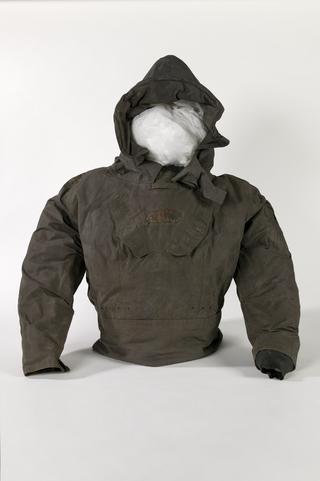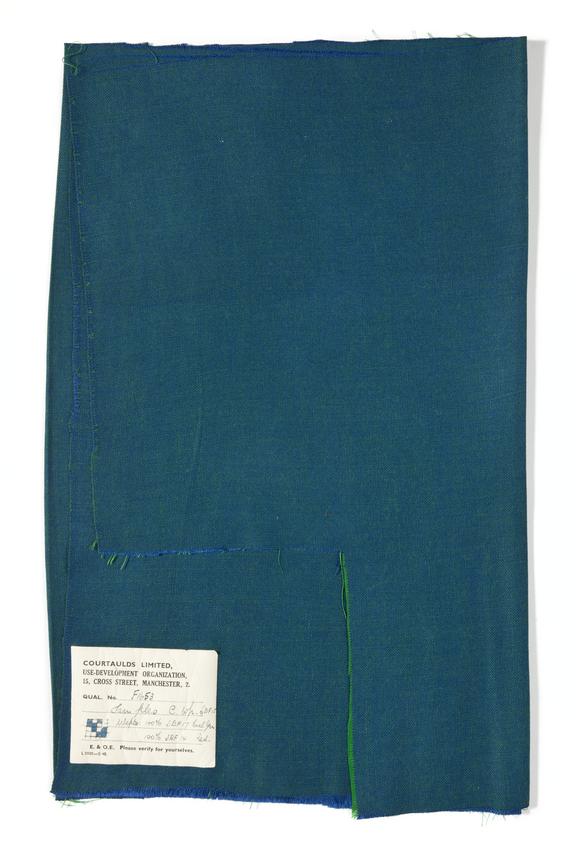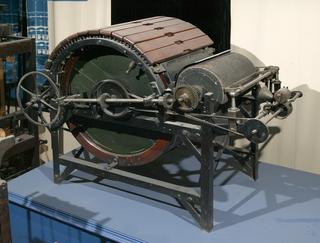
Twill weave rayon fabric
- Made:
- 1948 in Manchester




Textile, twill weave fabric, fine green weft and blue warp, probably of rayon, manufactured by Courtaulds User Development Organisation, Cross Street, Manchester, dated May 1948.
This rare textile sample provides an insight into fabric experimentation taking place in Manchester in the post Second World War period. Developments in experimental textiles were driven by the desire to rejuvenate the UK’s textile industry. This is one of many samples of experimental textiles designed and produced by Courtaulds.
Courtaulds was founded as a silk textile manufacturer by George Courtauld and his cousin Peter Taylor in 1794. In 1904, to diversify the business and reduce their dependence on natural silk, Courtaulds started manufacturing the newly developed fibre rayon after securing the patent. They were the first commercial manufacturers of this innovative semi-synthetic fibre. The company was broken up in 1990 into Courtaulds plc and Courtaulds Textiles Ltd.
Rayon is made from cellulose, extracted primarily from wood pulp. Rayon fabrics closely imitate natural fibres, being easily dyed, soft, flexible and absorbent. However, rayon does not insulate well and is not particularly durable.
Twill is a classification of a weave pattern used to make fabric. Twill can be identified by its creation of diagonal lines along the fabric. The distinctive diagonal lines are made by passing the weft thread over one or more warp threads and then under two or more warp threads. Twill is often used for sturdy fabrics such as upholstery. Denim is an example of twill fabric.




